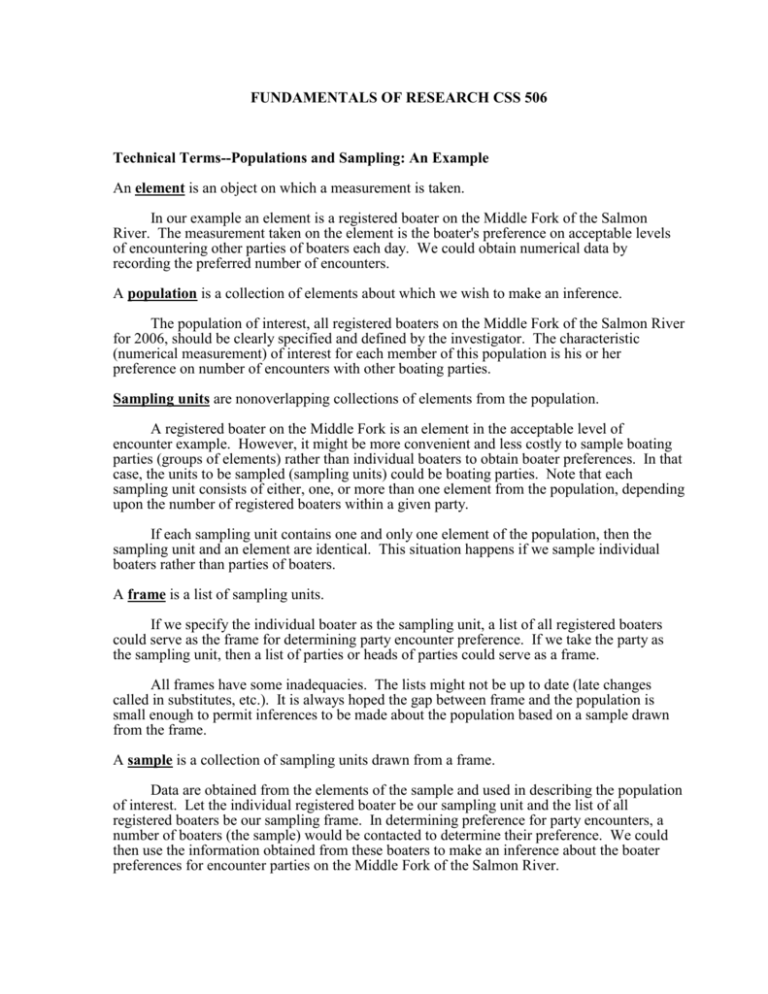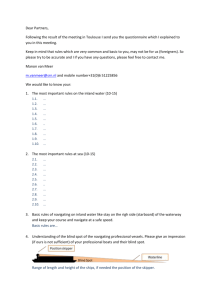Sampling Terms
advertisement

FUNDAMENTALS OF RESEARCH CSS 506 Technical Terms--Populations and Sampling: An Example An element is an object on which a measurement is taken. In our example an element is a registered boater on the Middle Fork of the Salmon River. The measurement taken on the element is the boater's preference on acceptable levels of encountering other parties of boaters each day. We could obtain numerical data by recording the preferred number of encounters. A population is a collection of elements about which we wish to make an inference. The population of interest, all registered boaters on the Middle Fork of the Salmon River for 2006, should be clearly specified and defined by the investigator. The characteristic (numerical measurement) of interest for each member of this population is his or her preference on number of encounters with other boating parties. Sampling units are nonoverlapping collections of elements from the population. A registered boater on the Middle Fork is an element in the acceptable level of encounter example. However, it might be more convenient and less costly to sample boating parties (groups of elements) rather than individual boaters to obtain boater preferences. In that case, the units to be sampled (sampling units) could be boating parties. Note that each sampling unit consists of either, one, or more than one element from the population, depending upon the number of registered boaters within a given party. If each sampling unit contains one and only one element of the population, then the sampling unit and an element are identical. This situation happens if we sample individual boaters rather than parties of boaters. A frame is a list of sampling units. If we specify the individual boater as the sampling unit, a list of all registered boaters could serve as the frame for determining party encounter preference. If we take the party as the sampling unit, then a list of parties or heads of parties could serve as a frame. All frames have some inadequacies. The lists might not be up to date (late changes called in substitutes, etc.). It is always hoped the gap between frame and the population is small enough to permit inferences to be made about the population based on a sample drawn from the frame. A sample is a collection of sampling units drawn from a frame. Data are obtained from the elements of the sample and used in describing the population of interest. Let the individual registered boater be our sampling unit and the list of all registered boaters be our sampling frame. In determining preference for party encounters, a number of boaters (the sample) would be contacted to determine their preference. We could then use the information obtained from these boaters to make an inference about the boater preferences for encounter parties on the Middle Fork of the Salmon River.










